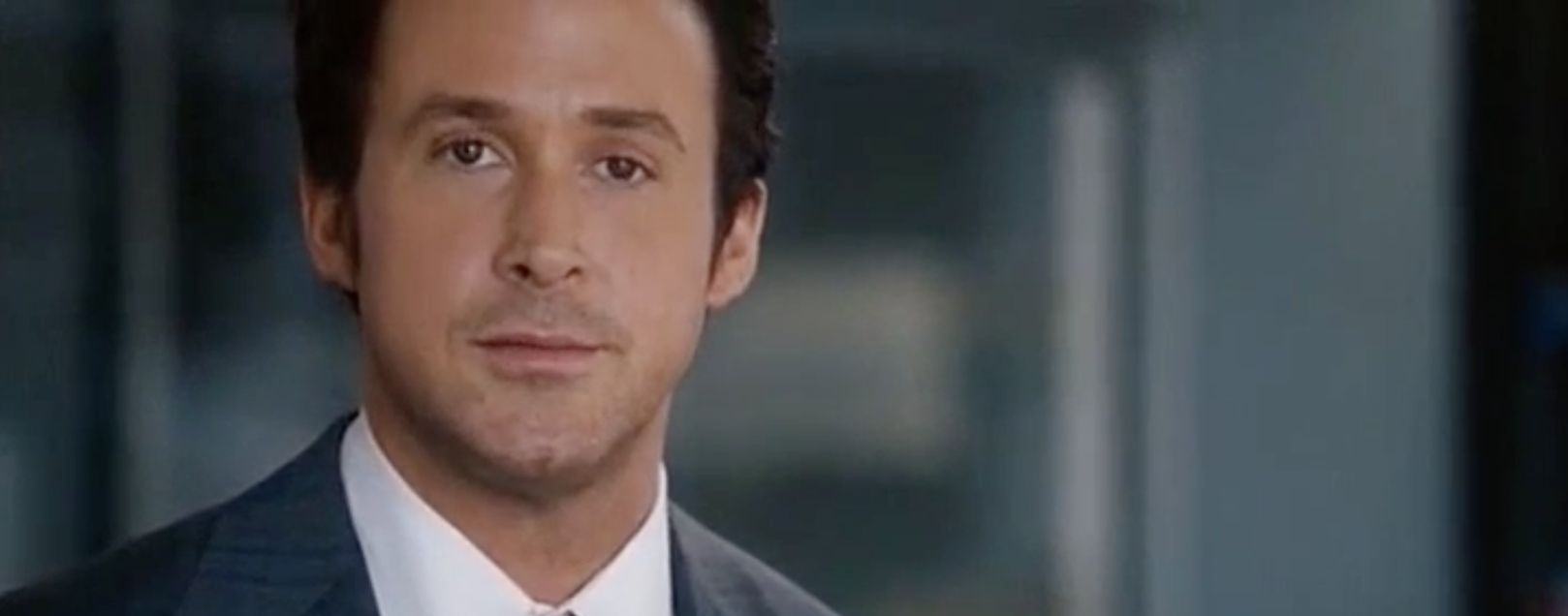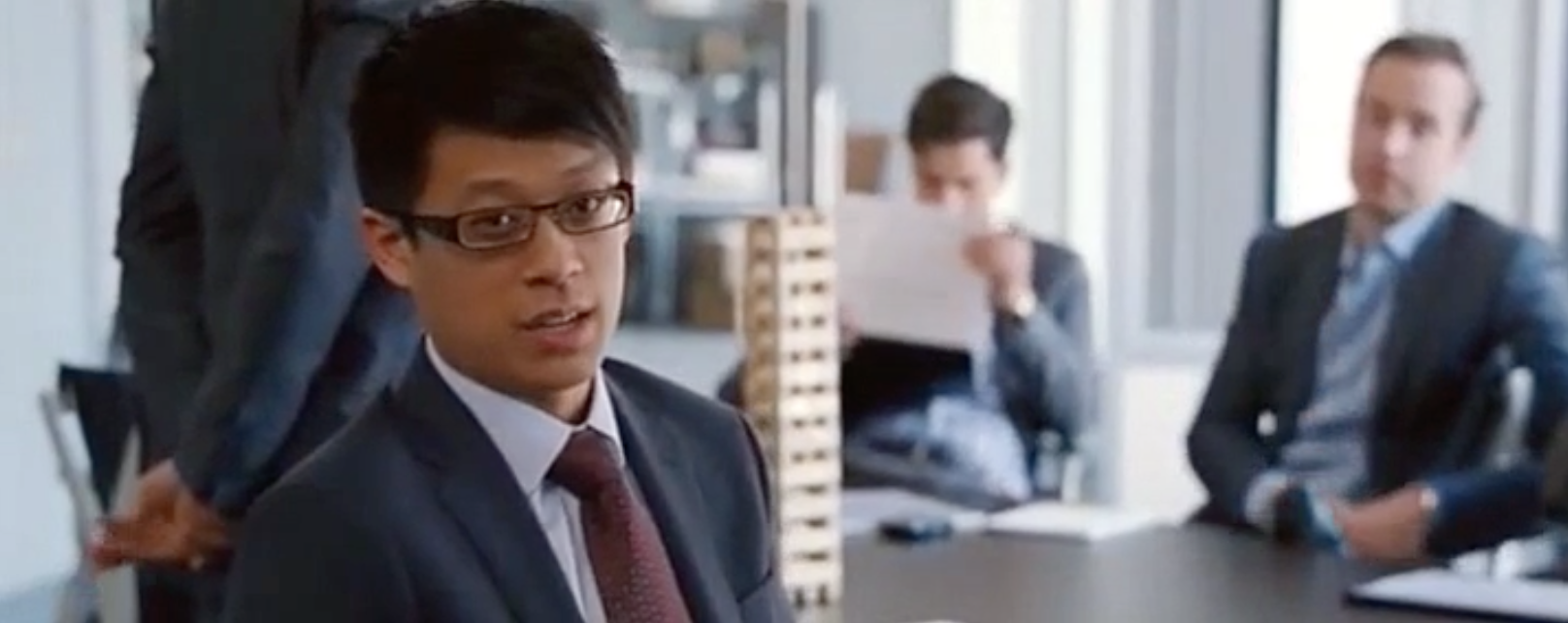Why does “The Big Short” defy the “show, don’t tell” rule?
One of the first rules of film school is “show, don’t tell.” Film is a visual art. Its strength lies in its imagery, and a good filmmaker should to be able to evoke thoughts and emotions from the power of a well-crafted image alone.
The Big Short (2015) throws away this rule and turns “telling” into a creative exercise. When it comes to making us understand the details of the 2008 financial crash and why exactly it happened, Adam McKay’s approach to illustrating the collapse of America’s housing market is heavy on “tell” rather than conventional methods of “show.” We frequently see actors break the fourth wall to address us directly, either to explain something in layman’s terms or to verify the authenticity of something we’re watching. (As it turns out, many events in The Big Short are so ludicrous it is challenging to believe they actually happened, so occasionally a character will confirm to us that the events indeed happened that way. At other times, they may point out that the reality played out with different details.)
Most notably, we receive cut-away narrative interludes in which celebrities like Selena Gomez and Anthony Bourdain explain complicated Wall Street jargon in digestible ways, attempting to engage us in basic understanding of these terms rather than glossing over the details of the financial world or letting us ignore that level of the drama. These moments disrupt the flow of the narrative in order to accomplish several aims—for one, because we’re learning about the film’s primary talking points from people who have no business explaining them, these sequences build confidence in the viewer’s comprehension. After all, if Margot Robbie can sit naked in a bubble bath and wax intelligent about sub-prime loans, certainly it’s something we can understand. Second, as the film self-consciously points out, the addition of a fun celebrity sexes up what would otherwise read to us as boring and inaccessible. The approach, too, adds moments of humor, turning what might be sections of exposition we would dread into enjoyable highlights of the story.
Third, these moments (especially when The Big Short tells us what’s accurate or not quite accurate compared to the actual events) continue to remind us that this is a real story, and we’re learning about our own world. Drawing attention to the fact that this is a dramatization of reality and placing emphasis on educating us, The Big Short does not allow us to fully escape into the narrative as a means of escapism. Rather, McKay wants us to remember that this is our world; people’s real lives were affected and still are; and we should emerge from the film with more awareness, ready to bring more scrutiny to the present-day world of finances.
Significantly, these “telling” sections indicate to us that The Big Short wants us to understand the actual events of the 2008 crash. In Wolf of Wall Street (2013), Martin Scorsese took the opposite approach, eschewing all complex financial talk and giving us a story of rich men obnoxiously enjoying their money, which they gain through shadowy means we vaguely understand to be illegal. Leonardo DiCaprio’s Jordan Belfort also breaks the fourth wall and talked to camera, but he does so to tell us that we wouldn’t understand the financial tricks he’s pulling—we only need to understand that those tricks make him very, very rich.
By contrast, McKay makes the conscious attempt to spread understanding through The Big Short. Jared Vennett (Ryan Gosling) opens the film by talking to camera about banking changed from a slow, unglamorous job in the 1970s to America’s number one industry of flashy wealth, largely thanks to the idea of the mortgage-backed security (MBS). Then came the crash of 2008, and while we all remember the consequences, Vennett points out that the causes, to this day, are superficially understood by most. “I’m guessing most of you still don’t really know what happened,” Vennett says. “Yeah, you’ve got a sound bite so you don’t sound dumb, but come on.”

The breaking of the fourth wall and the celebrity explanations work largely due to the film’s rapid, free-associative editing style. Splices of pop culture and media footage combine with on-screen text definitions of complex terminology. As we hear about the likelihood that these funds built on mortgages with falsely high ratings will fail, the financial talk is intercut with pictures of Americans buying and owning homes. The intercutting helps us remember that these numbers represent the livelihoods and well-being of real people.
The result of The Big Short‘s editing is a clever, engaging sensory assault that is keenly aware of the risk that, for all these attempts to engage us, much of it will still go over our heads. That’s where names like Gosling, Brad Pitt, Steve Carrell, and Christian Bale come in —even when we lose our grasp of what these guys are talking about, they carry the film with their performances until we get back on track. The film needs both its stars and its dressed-up exposition; without these, it would lose 99% of its audience members within ten minutes. It is precisely the type of material for which “show, don’t tell” doesn’t work.
The day-to-day workings of Wall Street are not interesting in themselves. Moreover, as the film directly tells us, many components of the financial world are made intentionally over-complicated and confusing, so that average people will tune out and leave bankers to do whatever they want. MBSs and synthetic collateralized debt obligations (CDOs) are not inherently dramatic material. So McKay, a director known for comedies like Anchorman (2004), is exactly the person to deliver this material to us in a pop culture-friendly way. Anchorman and its Will Ferrell-toting film brethren may be remembered for their quotable poop and sex jokes, but an undercurrent of intelligence runs through McKay’s films. Much of Anchorman’s humor stems from honest social, political, and gender-charged realities of past decades. Here McKay capitalizes on the fact that The Big Short’s subject is so outrageously incomprehensible that, in the right hands, it can be seen as funny for its very absurdity.

With the chaotic, cheeky editing and compositional structure of The Big Short, we can spend two hours with a film about mortgages and corrupt Wall Street bankers without feeling like we’re watching paint dry. At the same time, there is a deep outrage in the film, and—while its main characters make bundles of money—the end result is tragedy for honest, working people. All of The Big Short‘s humor and creativity is put toward the purpose of helping us understand the reality of how our banks misused us. It is impossible for any “regular” working-class person to watch The Big Short and not feel violated by the banks they entrust with their money.
Yet what makes The Big Short so special, even more than its moral perspective, is its attempt to make us grasp what even informational journalism has so far struggled to explain to us. The New York Times wrote, “Among Mr. McKay’s immediate ideas was to have his characters talk to the camera, telling the audience what really happened and what had been slightly dressed up for the screen. He said he wanted the movie to be straightforward. ‘We’re going to explain everything cleanly,’ he said. ‘It’s going to seem complicated, you’re going to feel dumb, but the truth is, it’s not that hard.’”
Without the film’s creative, colorful devices to make the exposition work, though, it would be very hard indeed.

